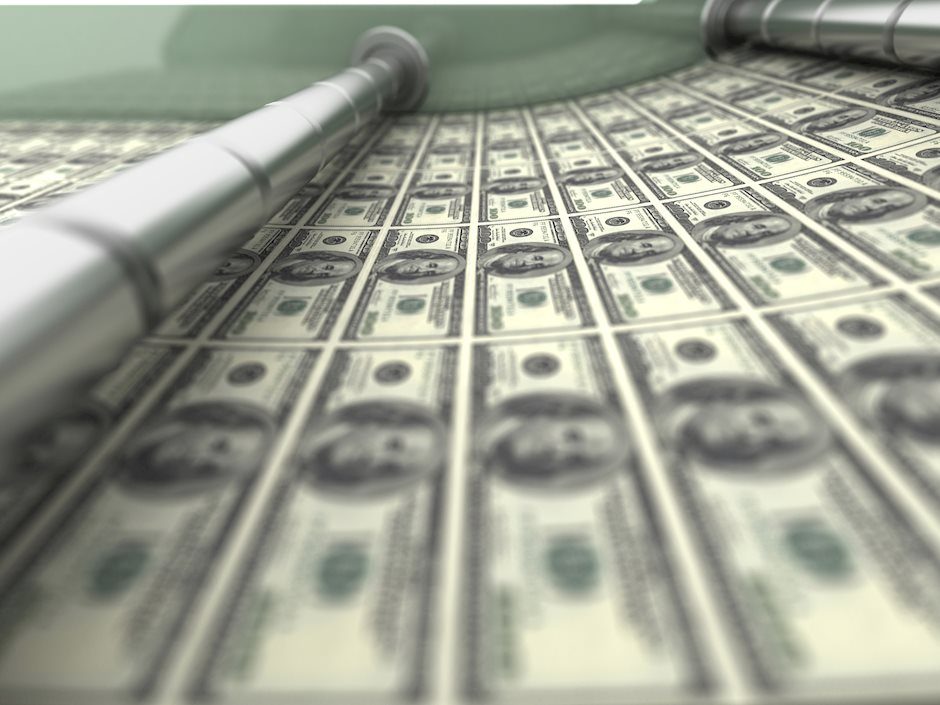Dollar soars as Powell expresses little concern about inflation and rates

The U.S. dollar traded sharply higher against all of the major currencies after Federal Reserve Chairman Powell expressed little to no concern about the recent spike in yields. Ten year Treasury yields climbed 4%, closing in on one year high. Stocks crashed in response with the Dow Jones Industrial Average falling more than -300 points. The spike in yields is bad for stocks because higher borrowing costs slows the recovery. The benchmark 30 year mortgage rate for example rose above 3% for the first time since July 2020. Interest rates are still very low but refinancing and demand for new homes will ease if mortgage rates continue to rise.
The U.S. dollar benefits in a few different ways. Powell’s confidence in the U.S. economy and its ability to weather the increase in rates is good for the dollar. A higher more attractive yield also draws demand for the greenback and most importantly, the slide in stocks drives investors into the currency’s safety. USD/JPY climbed to its strongest level in 8 months after Powell’s comments while USD/CHF rose to its highest level in 4 months.
The big question now is whether Friday’s non-farm payrolls report will add or ease the dollar’s gains. Based on today’s rally and the pre-Powell gain in stocks, investors are not concerned about a weak jobs report. Over the last 2 months, the job market was very weak – 227k jobs were lost in December and only 49k of those jobs were recovered in January. Economists are looking for a strong recovery in February with U.S. companies adding more than 180K workers. There’s no question that the manufacturing job market is hot but the service sector is slowing. Yesterday, we learned that the non-manufacturing ISM index dropped from 58.7 to 55.3 in February with the employment component falling to 52.7 from 55.2. ADP also reported weaker payroll growth. There are reasons to believe that more jobs were created in February but the deterioration in these two key measures suggests that payrolls could fall short of expectations. Weaker jobs data would compound the slide in stocks and sell-off in risk currencies. Ironically this means it could be positive rather than negative for the dollar because ultimately, the U.S. economy is on a path to recovery.
Arguments in Favor of Weaker Payrolls
- Decline in Employment Component of ISM Services.
- ADP Reports 117K Increase in Payrolls vs. 195K.
- Drop in University of Michigan Consumer Sentiment Index.
Arguments in Favor of Stronger Payrolls
- Week Jobless Claims fall for 4 Straight Weeks.
- Continuing Claims Drops to 4.295M from 4.69M.
- Challenger Reports Drop in Layoffs.
- Conference Board Consumer Confidence Index Hits 3 Month Highs.
- Employment Component of ISM Manufacturing Highest Since March 2019.
It is important to understand that Powell’s relaxed outlook on inflation and yields comes from place of optimism. Powell said “We expect that as the economy reopens and hopefully picks up, we will see inflation move up through base effects.” “That could create some upward pressure on prices. There’s good reason to think that the outlook is becoming more positive at the margins.” Powell didn’t see a reason to take steps to stabilize the bond market and stem the rise in yields.
The Swiss Franc and Japanese Yen sold off the most against the U.S. dollar but other currencies trailed not far behind. Significantly weaker than expected Eurozone retail sales contributed to EUR/USD’s break below 1.20. However stronger than expected trade data from Australia did not help AUD avoid a slide. Aside from NFPs, Canada’s IVEY PMI and trade balance reports are also scheduled for release next week.
Author

Kathy Lien
BKTraders and Prop Traders Edge

















